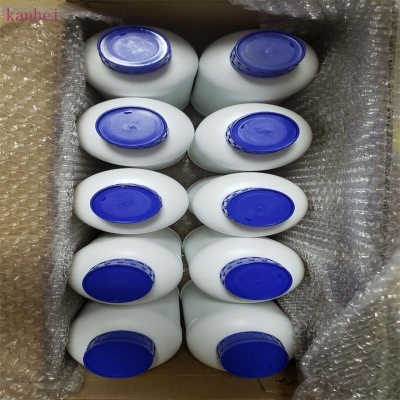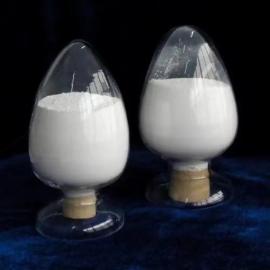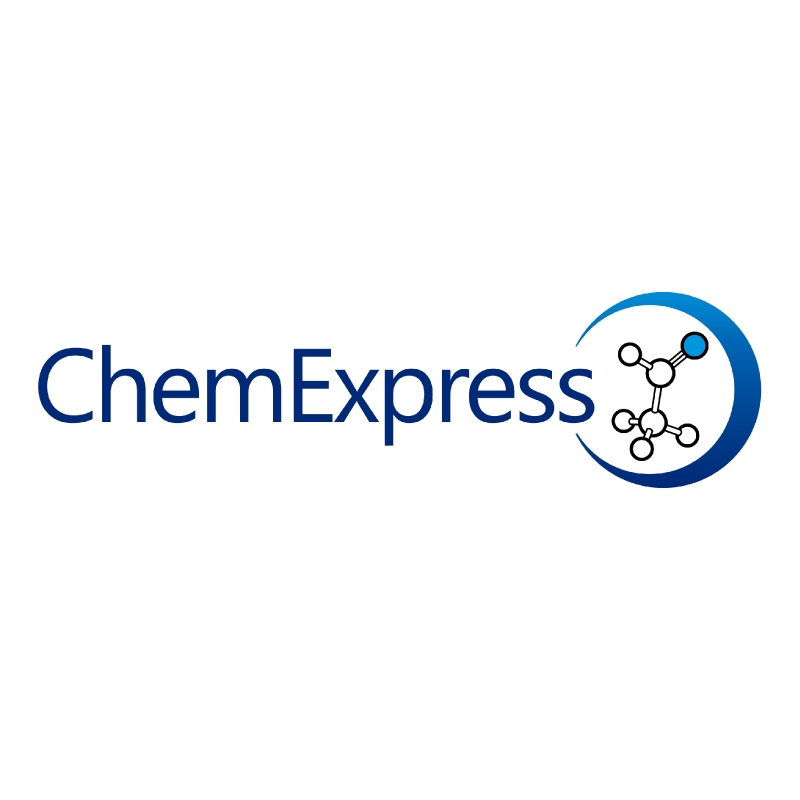Pharmaceutical Intermediates
- • Analgesics (55)
- • Anesthetics (47)
- • Anti-Addiction Agents (8)
- • Antibacterials (94)
- • Anticonvulsants (19)
- • Antidementia Agents (22)
- • Antidepressants (33)
- • Antiemetics (23)
- • Antifungals (22)
- • Antigout Agents (8)
- • Anti-inflammatory Agents (23)
- • Antimigraine Agents (21)
- • Antineoplastics (412)
- • Antiparasitics (10)
- • Antiparkinson Agents (28)
- • Antipsychotics (49)
- • Antispasticity Agents (12)
- • Antivirals (144)
- • Anxiolytics (15)
- • Blood Glucose Regulators (96)
- • Blood Products (61)
- • Cardiovascular Agents (148)
- • CNS Agents (20)
- • Dental and Oral Agents (7)
- • Dermatological Agents (18)
- • Electrolytes (15)
- • Gastrointestinal Agents (58)
- • Genetic/Enzyme Disorder (12)
- • Genitourinary Agents (43)
- • Immunological Agents (31)
- • Metabolic Bone Disease (6)
- • Ophthalmic Agents (31)
- • Respiratory Tract (48)
- • Skeletal Muscle Relaxants (4)
- • Sleep Disorder Agents (23)
- • Oled Material Intermediate (309)
- • Heterocyclic Compound (9725)
- • Bulk Drug Intermediates (16547)
Related News
-
Roche Acquires Carmot for $3.1 Billion to Enter Obesity Drug Market
2023-12-06 -
Two departments issued a document to guidethe strengthening of drug cases investigation and handling
2022-10-24 -
National Health Care Commission: 50% of thecountry's public hospitals above the second level have carried out appointmentdiagnosis and treatment services
2022-10-24 -
India starts testing a pharmaceuticalcompany's exports of cough syrup
2022-10-24 -
Inmanar Announces Several BreakthroughSequencing Innovations
2022-10-24 -
China's medical supplies supply securitycapabilities continue to enhance
2022-10-24
Sort Bulk Drug Intermediates Alphabetically
Bulk Drug Intermediates
Get Bulk Drug Intermediates Raw Materials by Regionbenzofuran-4-carboxylic acid
(166599-84-4)-
Pharmacy Grade / -
-
- / 99.00%
-
![4-Benzofurancarboxylic Acid buy 4-Benzofurancarboxylic Acid]()
Industrial Grade / 99%
-
![Benzofuran-4-carboxylic acid buy Benzofuran-4-carboxylic acid]()
Request for quotation , get quotes from more suppliers.
AMMONIUM CHLORIDE-15N
(39466-62-1)-
- / 99%
-
![AMMONIUM CHLORIDE-15N buy AMMONIUM CHLORIDE-15N]()
Industrial Grade / 99.00%
-
![AMMONIUM CHLORIDE-15N buy AMMONIUM CHLORIDE-15N]()
-
![AMMONIUM CHLORIDE-15N buy AMMONIUM CHLORIDE-15N]()
Industrial Grade / 99%
Request for quotation , get quotes from more suppliers.
5-Amino-2-chlorobenzonitrile
(35747-58-1)-
- / 99.00%
-
![5-Amino-2-chlorobenzonitrile buy 5-Amino-2-chlorobenzonitrile]()
IndustrialGrade / 99.00%
-
![5-Amino-2-chlorobenzonitrile buy 5-Amino-2-chlorobenzonitrile]()
-
![5-Amino-2-chlorobenzonitrile buy 5-Amino-2-chlorobenzonitrile]()
Industrial Grade / 99%
Request for quotation , get quotes from more suppliers.
3-(3-Aminophenyl)propionic acid
(1664-54-6)-
![3-(3-Aminophenyl)propanoic acid buy 3-(3-Aminophenyl)propanoic acid]()
-
![3-(3-AMINOPHENYL)PROPIONIC ACID buy 3-(3-AMINOPHENYL)PROPIONIC ACID]()
-
![3-(3-Aminophenyl)propanoic acid buy 3-(3-Aminophenyl)propanoic acid]()
Industrial Grade / 99%
-
![3-Aminophenylpropanoic Acid buy 3-Aminophenylpropanoic Acid]()
Different Grade / 99.9%
$0.1/KG EXW
Request for quotation , get quotes from more suppliers.
1-(4-Aminophenyl)-2,2,2-trifluoroethanone
(23516-79-2)-
![1-(4-AMINOPHENYL)-2,2,2-TRIFLUORO-1-ETHANONE CAS NO 23516-79-2 buy 1-(4-AMINOPHENYL)-2,2,2-TRIFLUORO-1-ETHANONE CAS NO 23516-79-2]()
Industrial Grade, Feed Grade, Food Grade, Pharma Grade / 99%
$11.11/KG EXW
-
Industrial Grade / 99%
-
Industrial Grade / 95%
-
![1-(4-aminophenyl)-2,2,2-trifluoro-1-ethanone buy 1-(4-aminophenyl)-2,2,2-trifluoro-1-ethanone]()
Request for quotation , get quotes from more suppliers.
Chloramphenicol succinate
(3544-94-3)-
![Chloramphenicol hemisuccinate buy Chloramphenicol hemisuccinate]()
-
![Chloramphenicol hemisuccinate buy Chloramphenicol hemisuccinate]()
Industrial Grade / 99%
-
![[2-[(dichloroacetyl)amino]-3-hydroxy-3-(4-nitrophenyl)propyl] hydrogen [R-(R*,R*)]-succinate buy [2-[(dichloroacetyl)amino]-3-hydroxy-3-(4-nitrophenyl)propyl] hydrogen [R-(R*,R*)]-succinate]()
Different Grade / 99.9%
$0.1/KG EXW
-
![4-[(2R,3R)-2-[(2,2-dichloroacetyl)amino]-3-hydroxy-3-(4-nitrophenyl)propoxy]-4-oxobutanoic acid buy 4-[(2R,3R)-2-[(2,2-dichloroacetyl)amino]-3-hydroxy-3-(4-nitrophenyl)propoxy]-4-oxobutanoic acid]()
Request for quotation , get quotes from more suppliers.
2-Deoxy-2-fluoro-L-fucose
(70763-62-1)-
Pharmacy Grade / 99%
-
- / 99.00%
-
-
![2-Deoxy-2-fluoro-L-fucose buy 2-Deoxy-2-fluoro-L-fucose]()
Industrial Grade / 99%
Request for quotation , get quotes from more suppliers.
N-(1-Oxohexadecyl)-L-glutaMic Acid tert-Butyl Este
(536721-25-2)-
Pharmacy Grade / 99%
-
-
- / 98%
-
![N-(1-Oxohexadecyl)-L-glutaMic Acid tert-Butyl Ester buy N-(1-Oxohexadecyl)-L-glutaMic Acid tert-Butyl Ester]()
Industrial Grade / 99%
Request for quotation , get quotes from more suppliers.
N-[(9H-Fluoren-9-ylmethoxy)carbonyl]-L-valyl-N5-(aminocarbonyl)-N-[4-(hydroxymethyl)phenyl]-L-ornithinamide
(159858-22-7)-
- / 99.00%
-
- / 99%
-
-
![FMoc-Val-Cit-PAB buy FMoc-Val-Cit-PAB]()
Industrial Grade / 99%
Request for quotation , get quotes from more suppliers.
-
![4-(trans-4-ethylcyclohexyl) benzonitrile buy 4-(trans-4-ethylcyclohexyl) benzonitrile]()
Industrial Grade / pharmaceutical grade / 99%
-
Industrial Grade / 99%
-
![trans-4-(4-Ethylcyclohexyl)benzonitrile buy trans-4-(4-Ethylcyclohexyl)benzonitrile]()
Industrial Grade / 99%
-
![4-trans-ethylcyclohexylcyanobenzene buy 4-trans-ethylcyclohexylcyanobenzene]()
Request for quotation , get quotes from more suppliers.
More Information
Intermediates are unavoidable products of chemical reactions and are widely used in pharmaceuticals, materials, chemicals, and other industries.
In the pharmaceutical industry, an active pharmaceutical ingredient (API) is a product of a synthesis process that has been completed and is used in the manufacture of bulk drugs and intermediates are some chemical raw materials or chemical products used in the synthesis process of APIs.
The application industries of pharmaceutical intermediates mainly include antibiotics, anticancer drugs, cardiovascular drugs, neurological drugs, hormone drugs, and immunosuppression.
Functions of intermediates
Intermediates serve a variety of responsibilities in the drug production process.
● They can serve as a link between the API and the finished medicine. The drug production process can be broken down into multiple steps using intermediates, each requiring a different chemical.
● They can modify reaction conditions and synthesis pathways, increasing drug synthesis efficiency and yields.
● They can be employed to modify the purification, crystallization, and solid characteristics of medicines.

































